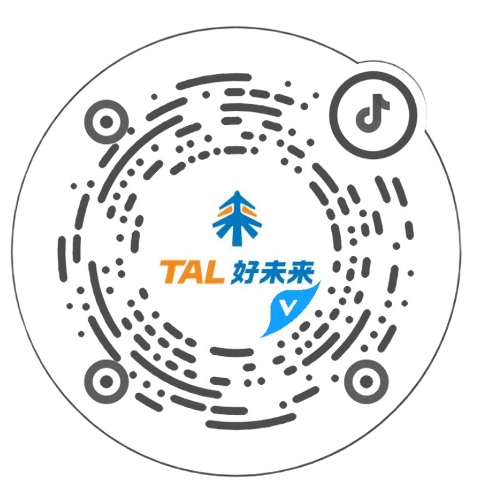New Education, New Starting Point - The 2019 Tomorrow Advancing Intelligence (TI) Education Conference showcases the future of education.
2019-07-18 16:00:00

25
On July 18th, the 2019 Tomorrow Advancing Life (TAL) Education Technology Intelligent Summit, hosted by the TAL Education Group, was held in Beijing. With the theme of "AI in Education, Opening the Future," the summit brought together over 600 education scholars, industry experts, and partners to explore hot issues in the integration of artificial intelligence and education, as well as to engage in forward-looking discussions on the future trends in education.
During the summit, TAL Education Group showcased its latest educational technology R&D achievements such as WISROOM 2.0, EduCloud, and T-Box, and officially launched an AI open platform, announcing the opening of its latest technological developments to the entire industry to jointly explore the future of education.
New education trends with the development of artificial intelligence have profoundly affected the field of education. Academician Sun Jiaguang of the Chinese Academy of Engineering attended the summit and delivered a keynote speech. He pointed out that technological progress has become an important driving force for economic development, as well as for the advancement of education. Combined with scenarios related to education, speech recognition and image recognition will be applied to personalized education, automatic scoring, and speech recognition evaluation. Students will receive tailored learning support, leading to "adaptive" education for the future.
When it comes to the future of education, what will AI bring? Bai Yunfeng, President of TAL Education Group, stated that TAL Education has always adhered to two educational concepts: to assist in "fairer and higher-quality education" and to cultivate morality in students, providing them with a more suitable education. Technological progress is the best way to achieve inclusive education. TAL Education hopes to use (teaching + education) * AI to achieve "fairness" and "quality" in education by increasing efficiency and improving the overall learning experience. The goal is to help students develop integrity, kindness, and honesty, provide them with a guide to understanding the world, foster independent thinking, and enable them to attain happiness.
As for technological education, what are we really discussing? How does the power of technology return to the essence of education? Huang Yan, CTO and President of the Open Platform Business Unit at TAL Education, shared his thoughts on the reconsideration of "technology + education" at the summit. He believed that the current "technology + education" model actually refers to the integration of education with technological elements, which has gone through three stages of development: content + education, Internet + education, and now AI + education. TAL Education hopes to use the power of technology to return the classroom to the students, making teaching truly student-centered, teacher-guided, and classroom-centered.
What will the future of education look like? The summit also featured a peak discussion on education. Li Fei, Vice President of Technology at TAL Education; Zhou Caihong, Principal of the Tenth Primary School in Xixia District, Yinchuan City; Bi Yanchao, a professor at the State Key Laboratory of Cognitive Neuroscience and Learning at Beijing Normal University; Chen Yunji, a researcher at the Institute of Computing Technology at the Chinese Academy of Sciences; and Li Rui, Head of TAL Education’s Teaching Research, jointly discussed how to use technology to open the door to the future of education.
During the summit, TAL Education also concentrated on releasing its latest research and development achievements in educational technology, which became the focal point of the event.
The classroom is not only the main battlefield for teaching but also the main focus for empowering technology. At last year's summit, TAL Education's self-developed smart classroom, WISROOM, made a stunning appearance. After a year of practice and refinement, TAL Education officially released the WISROOM 2.0 version at the summit and clearly defined the AI course, which can adjust teaching content based on personalized student data, thus becoming adaptable to each student. Therefore, a true AI class is also an intelligent data class. Through WISROOM, every traditional classroom can be transformed into an intelligent classroom for AI courses.
In order to continue evolving WISROOM and to better align with actual teaching, TAL Education also launched the "AI Angel Plan" and the "AI New Course Plan." Principals and teachers can trial the system and courses of WISROOM through the "AI Angel Plan," allowing WISROOM to "evolve and iterate" through the input and feedback of teachers. Over the next year, the "AI New Course Plan" will open up the system and course content tools of WISROOM to the industry.
Great teaching cannot be achieved without the support of high-quality teaching and research content. At the summit, TAL Education officially released the EduCloud system. EduCloud integrates TAL Education's core teaching and research resources from the past 16 years, which are fully digitized, visualized, and interactive, enabling teachers to rapidly complete courseware generation. With the input of the course name in the "search box," teachers can select different media materials to help students understand abstract knowledge points, saving time on lesson preparation and resource accumulation, and making the classroom more vivid and engaging, encouraging students to love learning.
During the summit, TAL Education also launched the first AI terminal designed specifically for intelligent teaching in the education industry — the T-Box. "T" carries two meanings: it represents "Teaching," a "brain" created for teaching; and it also represents "Thinking," possessing powerful thinking capabilities, not just mechanically transmitting knowledge. After installing T-Box, the classroom will have AI courses, dual-teacher courses, and EduCloud at its disposal, all while gaining access to TAL Education's best teaching content, teaching methods, and teaching experience. Furthermore, T-Box has 16T of AI computing power, capable of supporting simultaneous motion recognition for 800 individuals, or simultaneous recognition of 200 individuals' expressions and focus levels.
In 2018, TAL Education announced the implementation of an open platform strategy to achieve shared success with the industry. As of the end of 2018, TAL Education has served 1107 education institutions in 234 cities and regions nationwide, with over 20,000 offline students and offering over 10 million hours of online courses. However, the opening of courses alone is not enough. At this summit, TAL Education officially launched the AI open platform, sharing its technology with the entire industry.
The AI open platform will open three major industry solutions, including AI classroom solutions, AI classroom guard systems, and homework correction/homework search, as well as 21 custom AI capabilities including speech and image technologies, and four large-scale research data sets. All open AI capabilities have been grown and optimized within the TAL Education system, obtaining validation. For example, in TAL Education's offline dual-teacher classrooms, using speech and text understanding technology to correct students' oral practice questions has increased efficiency by over 20%, saving teachers more than 50,000 hours of time. In the peak period of summer vacation classes, there are over 2 million daily calls, and more than 3 billion cumulative uses of oral assessment. The two AI interactive classroom products, Future Magic School and Fun Foreign Teachers, have covered 129 cities and 60,000 students.
At the conference, representatives from public schools, research institutions, academic organizations, educational technology companies, and educational training institutions joined forces to launch the TAL Education AI open ecosystem, working together to promote the healthy development of the education industry.
In the era of AI, the industry trend of cross-border integration and collaborative sharing will reshape the educational ecosystem, leading to fundamental changes in the supply side of education resources, creating opportunities for high-quality and inclusive education. The TAL Education Technology Intelligent Summit showcased this trend's accelerated arrival. TAL Education will continue to open up the best practices of integrating cutting-edge intelligent technology into actual teaching scenarios and promote the formation of a collaborative and shared new educational ecosystem.




